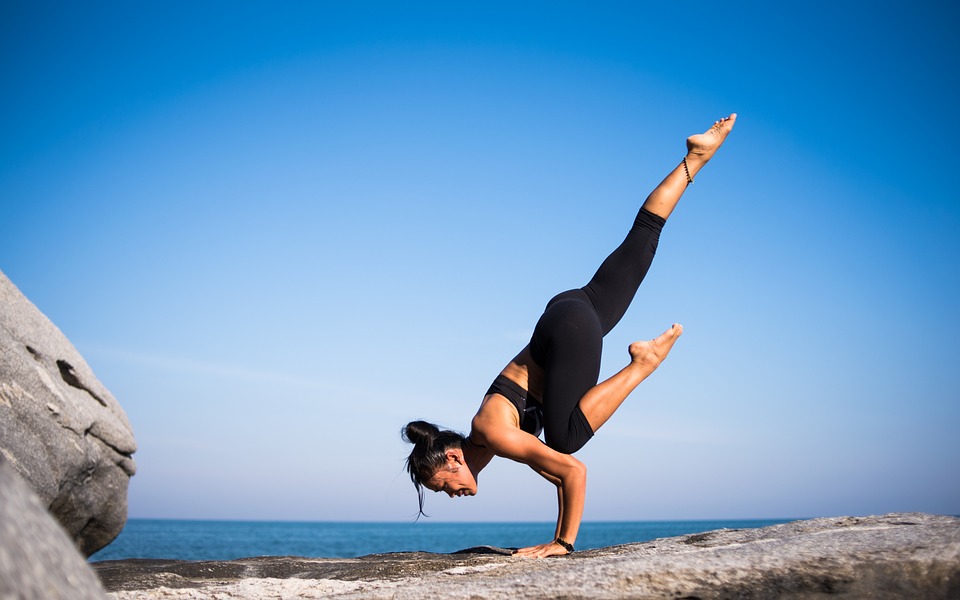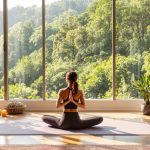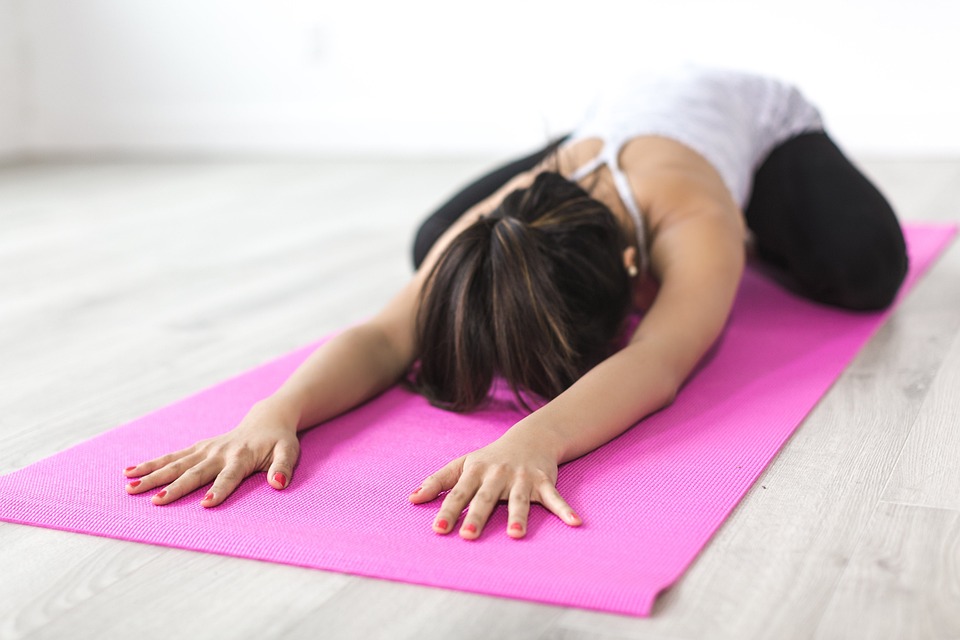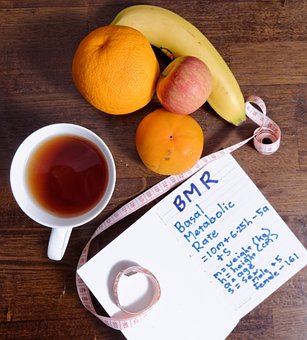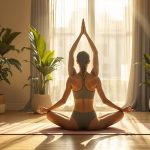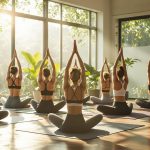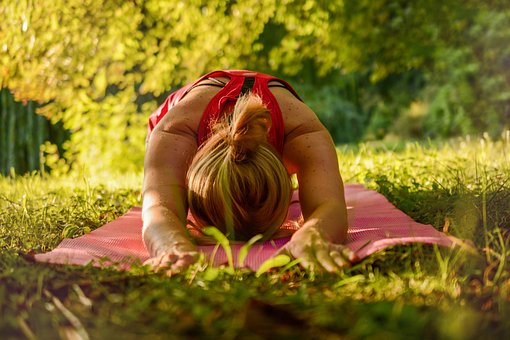
It is always beneficial to begin doing yoga and start to gain the advantages of it. This long-established form of exercise provides opportunities for anyone, irrespective of level of fitness, and has rapidly grown in the U.S., with a 2017 survey showing that around 14% of Americans engage in yoga. The various forms of yoga can be somewhat overwhelming, however they can be easily adapted to suit any individual, regardless of their age or fitness level.
Ross Rayburn, Director of Peloton Yoga and Meditation, suggests to begin with a class specially designed for those just starting out. He suggests that newbies start by practicing once every seven days and gradually increase the frequency of practice.
We have compiled all of the information and tips necessary for novices to begin a yoga routine, whether they are thinking of joining a yoga center or they wish to take a virtual yoga class from the comforts of their home. It is advised by health and fitness professionals that you consult with your doctor before beginning any sort of physical activity program.
What is Yoga?
Yoga has been around for millennia, originating in India and based on both physical exercises and spiritual beliefs, according to the National Institutes of Health National Center for Complementary and Integrative Health. There are a variety of yoga forms that span from soothing, reflective practices to more physically demanding routines. The average mind-body workout usually consists of performing a series of physical postures combined with special breathing exercises.
Health Benefits
Rayburn emphasizes that the advantages of practicing yoga consistently are manifold, but the particular benefits you will get will be contingent on what kind of yoga you do. He states that practicing alignment-based yoga can provide gains in strength and flexibility, as well as better bodily capabilities. Additionally, performing meditational or devotional types of yoga brings many advantages for mental and emotional well-being.
Some generally well-established yoga health benefits include:
- A 2016 study reported in the International Journal of Yoga demonstrated that males participating in a college athletic program experienced improvements in flexibility and balance due to their engagement in yoga twice a week, over a 10-week period. A study conducted in 2019 determined that there were significant enhancements to the flexibility in the lower body for people who practiced yoga.
- Results of a 12-week trial of Hatha yoga showed a notable rise in both cardiovascular endurance and muscle strength in the adults that participated. Research with inactive people showed that doing Hatha yoga was just as helpful as a stretching-strengthening workout in regards to increasing muscle strength, suppleness, movement, and other biomarkers.
- Yoga is well known for its capability to increase one’s perception of the body, mainly by the use of coordinating breaths and actions during the practice. An investigation conducted in 2022 discovered that following a 12-week yoga program, people coping with multiple sclerosis had a noticeable improvement in body awareness.
- You may be able to combat stress after only one yoga lesson. In a 2016 study, elderly people that were doing yoga for eight weeks in a row stated that they sensed a lessening of stress, which was additionally affirmed by an analysis of salivary cortisol. A 2017 study revealed that middle-aged women had lower amounts of cortisol (the stress hormone) circulating in their bodies after they practiced yoga for an hour and a half, in comparison to when they weren’t doing any physical activity or exercising.
- A 2013 research analysis found that participating in yoga on a regular basis can be beneficial in helping with weight reduction and weight control, in addition to eating a balanced diet. A 2018 paper released in the International Journal of Behavioral Nutrition and Physical Activity suggested that engaging in yoga on a regular basis ends up causing one to engage in healthier dietary habits, and it also helps with the ability to better cope with emotional eating. Furthermore, it has been found to increase one’s capacity for physical activity as well.
- Yoga is an ideal method of helping to prevent injuries by correcting muscle imbalances and reducing tightness because it can enhance flexibility and suppleness.
- In 2017, a study review concluded that yoga was among the most powerful workouts for managing chronic pain. A review of 25 randomized controlled trials in 2020 showed that 20 of them demonstrated successful relief of back pain through yoga.
- Caring for chronic illness symptoms: Keeping up a regular exercise regimen can help to avert various long-term illnesses. Results from a 2015 research program carried out by Massachusetts General Hospital revealed that during a 12-month period of relaxation practice, which included meditation, yoga, and prayer, participants visited their doctors 43% less than the previous year. Investigating at UCLA, it was determined that taking part in Kirtan Kriya meditation (incorporating chanting and finger positioning) every day for two months may help bring down the immune system’s inflammatory response. This is an important discovery as inflammation levels are associated with numerous medical conditions.
Best Yoga Poses for Beginners
Rayburn recommends attempting some of the most well-known poses to begin a yoga routine if you are a beginner. Assemble your own yoga sequence from these postures to create a comprehensive yoga practice from home.
It’s advisable to go slow and pause for a few breaths during each exercise before transitioning to the following one.
1. Cat and Cow (Marjaiasana / Bitilasana)
One of the most necessary and simplest yoga poses for a novice to grasp is the Cat and Cow posture. Brooke Nicole Smith, a yoga instructor, highlights the importance of joining motion with the breath. She claims that by doing so, the spine is both extended and flexed, with each movement accompanied by a period of calmness, as well as when the spine is in a neutral state between each movement.
The advantages of this include having a deeper and more mindful breathing experience, as well as being more aware of and having better control over the spine, shoulders, and pelvis. This pose helps those new to yoga understand the link between their back, shoulders, hips, and breathing. These minor motions and relationships help comprehend the correct positioning in many poses (e.g. getting a better awareness of internal and external hip rotation is easier when in a straight posture connected to the back). I have a strong sense of unity with my body while in this position. I am also extremely conscious of my body while in this posture. When I engage in it, my attention goes straight to my physical being. My mind quiets. I am completely aware of my breathing, my body in motion, and my physical frame. I experience peace.”
This pose is deemed a cornerstone for novices to comprehend and excel at since it mirrors the same movements and activities of the backbone which take place in several other yoga poses. If your wrists are bothering you or hurting, you can use your hands to form fists or rest your arms on a cushioned support or a block. This spinal movement can be done while seated or standing.
2. Easy Pose (Sukasana)
Sitting with the legs crossed and a straight back is not always simple to accomplish. It’s important to be familiar with how to properly perform Easy pose since it’s usually the beginning position in most yoga classes. Knowing how to get comfortable in this basic pose is key. As Yoga Teacher and Yoga Therapist Donna F. Brown state that it can be hard to stay in a simple posture for a mere five minutes because it’s uncommon to be so still in such a hectic and quickly-changing world. This pose is suitable for those beginning their practice and is a great way to start learning the art of meditation. Additionally, it helps provide good posture and encourages lengthening and alignment of the spine. Sukasana can provide a calming effect on both your psyche and physical form and can allow you to focus. In order to make sitting in Easy pose simpler, prop yourself up with a cushion, a few folded blankets, or even a yoga block. If your knees are hurting, you can use blankets or blocks to cushion and support them.
3. Mountain Pose (Tadasana)
The foundation of all standing poses is Mountain pose. Tadasana is ideal for those just starting out in yoga and can be practiced by most individuals who are physically capable. Starting off a yoga session with Tadasana is an optimal time to recognize and acknowledge any issues, and form a target for the yoga routine. Considering our mental state and past hurts, our posture when standing can give us an idea of what to work on during our yoga session today.
Remaining stationary and keeping an appropriate posture can be challenging for many people. When you are in Tadasana, every muscle in your body is employed to help keep you upright. The posture starts by firmly putting the feet on the ground to achieve stability. The vibrations begin in the feet and travel up the legs, thighs, and into the whole figure. The hips and stomach muscles come into play, assisting in the proper posture of the spine. The tension in the shoulders should be released, and the head should be held in line with the spine. By holding this position, an individual feels a sense of stability, strength, and power, hence the title, Mountain pose.
4. Downward Facing Dog (Adho Mukha Svanasana)
A frequently used asana in yoga classes is Downward Facing Dog. This stance is usually utilized as a bridge between poses and can be a great spot to take a break in a quickly-paced class. Kelly Clifton Turner, Head of Education at YogaSix, explains that although this pose can be tough, for her to get a sense of relief in her body, she does 5-10 reps of Down Dog. It relieves the spine of tension and pressure, going up to the neck area, enabling the head to feel relaxed and heavy. This exercise increases the flexibility of the hamstrings, which is helpful for individuals who spend many hours seated such as writing professionals and those who regularly participate in highly active sports like marathon running and cycling, which cause the hamstrings to become very tight. It unlocks the ribcage, facilitating an effortless and tranquil inhalation. Practicing for only a short amount of time has the power to strengthen one’s sense of security while also invigorating them, and they will find themselves feeling better physically afterward. Put one block beneath each of your hands (at the lowest level). This reduces strain on the shoulder area, allowing you to concentrate on making your spine as long as possible.
5. Cobra Pose (Bhujangasana)
The classical and most frequently done backbend in yoga is Cobra pose. Rachel Land, a Yoga Medicine instructor, suggests that Cobra pose is beneficial for countering a slumped posture. All backbends stretch the shoulder blades and elevate the chest, creating a sense of spaciousness that facilitates enhanced respiration and digestion. The Cobra pose, with its backbend that works against the force of gravity, can help bring back strength to the back muscles that tend to become weak from extended periods of sitting, which is typical of our modern lifestyles.
Deep backbends are tough for a lot of people, particularly those who are new to yoga. Postures that involve bending backward are included routinely in a yoga pose practice. This pose encourages us to practice three actions required to make deeper backbends more accessible:
- Posterior pelvic tilt: lifting the lower belly or lengthening the tail creates more space in the low back and lengthens commonly tight muscles on the fronts of the hips.
- Deep abdominal engagement: cinching around the waist even as the skin over the belly lengthens can help transfer the sensation of the backbend away from the lumbar spine to the targeted areas of the chest and upper back.
- Scapula retraction: squeezing the shoulder blades back toward the spine helps to lift and open the chest, creating the heart-opening benefits of the pose.”
Beginner Yoga Tips
Rayburn advises that if you are just starting out in yoga, the best way to gain insight into the right techniques and form is to take a beginner’s class. It is recommended to take it slowly when engaging in the practice and be mindful and precise in the movements, as this is intended to be a meaningful and mindful process.
Don’t become disheartened if your initial lesson does not turn out the way you wanted it to. Don’t become discouraged if your first yoga class isn’t great, urges the instructor. Keep trying until you find a teacher that has a great connection with you and is motivating enough to keep you coming back. Once you have identified the right type of course and trainer, you should begin to feel very motivated by practicing yoga.
Do not be too forceful right away; it is important to remain aware of your bodily capabilities and know when you have gone too far. Rayburn advises taking notes if you are unable to take deep breaths. Try using your breath as a tool to help slow down, alter, or take a pause. Additionally, remember the difference between feeling a bit of discomfort compared to the pain that is promptly noticeable. If you find yourself needing a restart during the class, you can always go back to doing a downward-facing dog or child’s pose.

